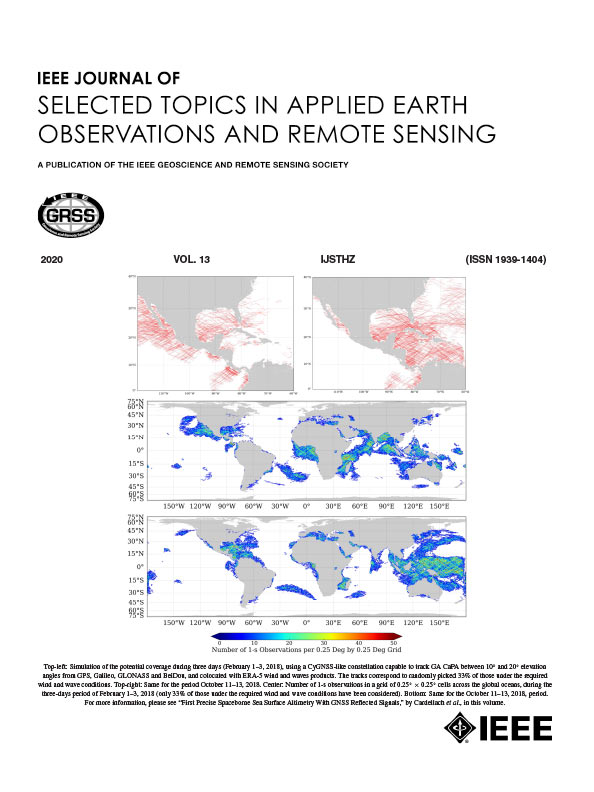3D Change Detection of Urban Vegetation Using Integrated TLS and UAV Photogrammetry Point Clouds
IF 5.3
2区 地球科学
Q1 ENGINEERING, ELECTRICAL & ELECTRONIC
IEEE Journal of Selected Topics in Applied Earth Observations and Remote Sensing
Pub Date : 2025-09-22
DOI:10.1109/JSTARS.2025.3612739
引用次数: 0
Abstract
Urbanization has brought about notable transformations in urban green areas within cities, affecting both environmental quality and the well-being of inhabitants. As a result, it is essential to monitor variations in urban vegetation through remote sensing methods. This research aims to overcome the shortcomings of conventional remote sensing approaches by integrating terrestrial laser scanning (TLS) with UAV-based photogrammetry for effective vegetation monitoring using change detection methods. For instance, the traditional remote sensing limitations include cloud coverage in remote sensing images, illumination issues, vertical shadows, and sensor-specific issues such as geometric and radiometric distortions that restrict the spatiotemporal availability of the ground surface information and limit the change detection analysis. This research focuses on detecting changes in the Malminkartano area of Helsinki during the leaf-off and leaf-on periods of 2022. 2D point cloud data were analyzed using the Multiscale Model-to-Model Cloud Comparison algorithm. The findings demonstrate the method’s capability to identify growth in urban vegetation up to 2.8 m. Additionally, accuracy evaluations indicated that the 95% confidence interval corresponded to a difference of approximately 4 cm for both TLS and UAV photogrammetric datasets. The study highlights processing-related uncertainties, including point density, alignment, vertical accuracy, and scale variation. Addressing these sources of error in future studies is essential for reliable estimation of tree attributes.基于集成TLS和无人机摄影测量点云的城市植被三维变化检测
城市化给城市内的城市绿地带来了显著的变化,影响了环境质量和居民的福祉。因此,利用遥感方法监测城市植被变化是十分必要的。本研究旨在克服传统遥感方法的不足,将地面激光扫描(TLS)与基于无人机的摄影测量相结合,利用变化检测方法对植被进行有效监测。例如,传统的遥感限制包括遥感图像中的云覆盖、照明问题、垂直阴影以及传感器特有的问题,如几何和辐射畸变,这些问题限制了地面信息的时空可用性并限制了变化检测分析。这项研究的重点是检测2022年落叶和落叶期间赫尔辛基马尔明卡尔塔诺地区的变化。使用多尺度模型到模型云比较算法对二维点云数据进行分析。研究结果表明,该方法能够识别高达2.8米的城市植被生长。此外,精度评估表明95%置信区间对应于TLS和UAV摄影测量数据集的大约4厘米的差异。该研究强调了与加工相关的不确定性,包括点密度、对准、垂直精度和尺度变化。在未来的研究中解决这些错误来源对于可靠地估计树的属性至关重要。
本文章由计算机程序翻译,如有差异,请以英文原文为准。
求助全文
约1分钟内获得全文
求助全文
来源期刊
CiteScore
9.30
自引率
10.90%
发文量
563
审稿时长
4.7 months
期刊介绍:
The IEEE Journal of Selected Topics in Applied Earth Observations and Remote Sensing addresses the growing field of applications in Earth observations and remote sensing, and also provides a venue for the rapidly expanding special issues that are being sponsored by the IEEE Geosciences and Remote Sensing Society. The journal draws upon the experience of the highly successful “IEEE Transactions on Geoscience and Remote Sensing” and provide a complementary medium for the wide range of topics in applied earth observations. The ‘Applications’ areas encompasses the societal benefit areas of the Global Earth Observations Systems of Systems (GEOSS) program. Through deliberations over two years, ministers from 50 countries agreed to identify nine areas where Earth observation could positively impact the quality of life and health of their respective countries. Some of these are areas not traditionally addressed in the IEEE context. These include biodiversity, health and climate. Yet it is the skill sets of IEEE members, in areas such as observations, communications, computers, signal processing, standards and ocean engineering, that form the technical underpinnings of GEOSS. Thus, the Journal attracts a broad range of interests that serves both present members in new ways and expands the IEEE visibility into new areas.

 求助内容:
求助内容: 应助结果提醒方式:
应助结果提醒方式:


